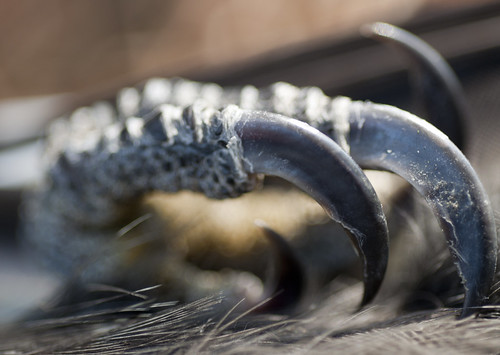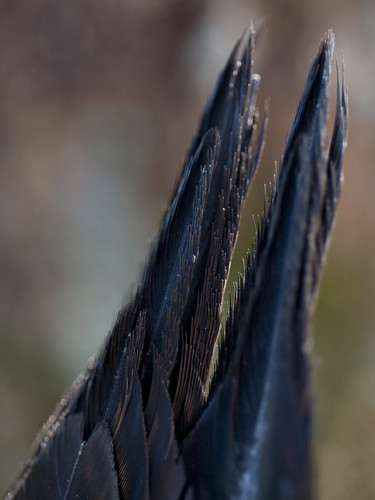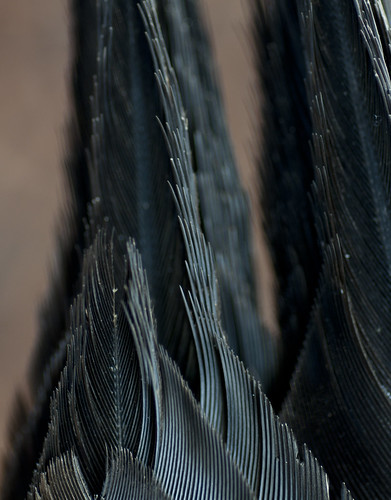Woodpecker feet are unique, and are modified in such a way that fits their style of foraging and nesting. Two toes in front and two toes in back allow for the ease of climbing both up and down tree trunks. The long, curved, sharp claws are perfect for gripping tree bark, and holding on tight when the bird begins to peck – or jackhammer, which is what the pileated woodpecker does.
Also modified are the woodpecker's tail feathers. The quills are very straight and stiff, and they act as a brace against tree trunks when the bird begins to hammer away. This is especially noticeable in pileated woodpeckers: their tail feathers are very long and pointed, and need to be especially strong for a bird that can do this to a tree!
If you're interested in attracting any sort of woodpecker to your bird feeder, whether it be downy, hairy, pileated, or anything in between, a suet feeder is your best bet. But not all suet feeders are created equal! Taking into consideration the need for a woodpecker to brace itself against a tree trunk, find a suet feeder that provides space for such – you'll want something along the lines of this model.







No comments:
Post a Comment